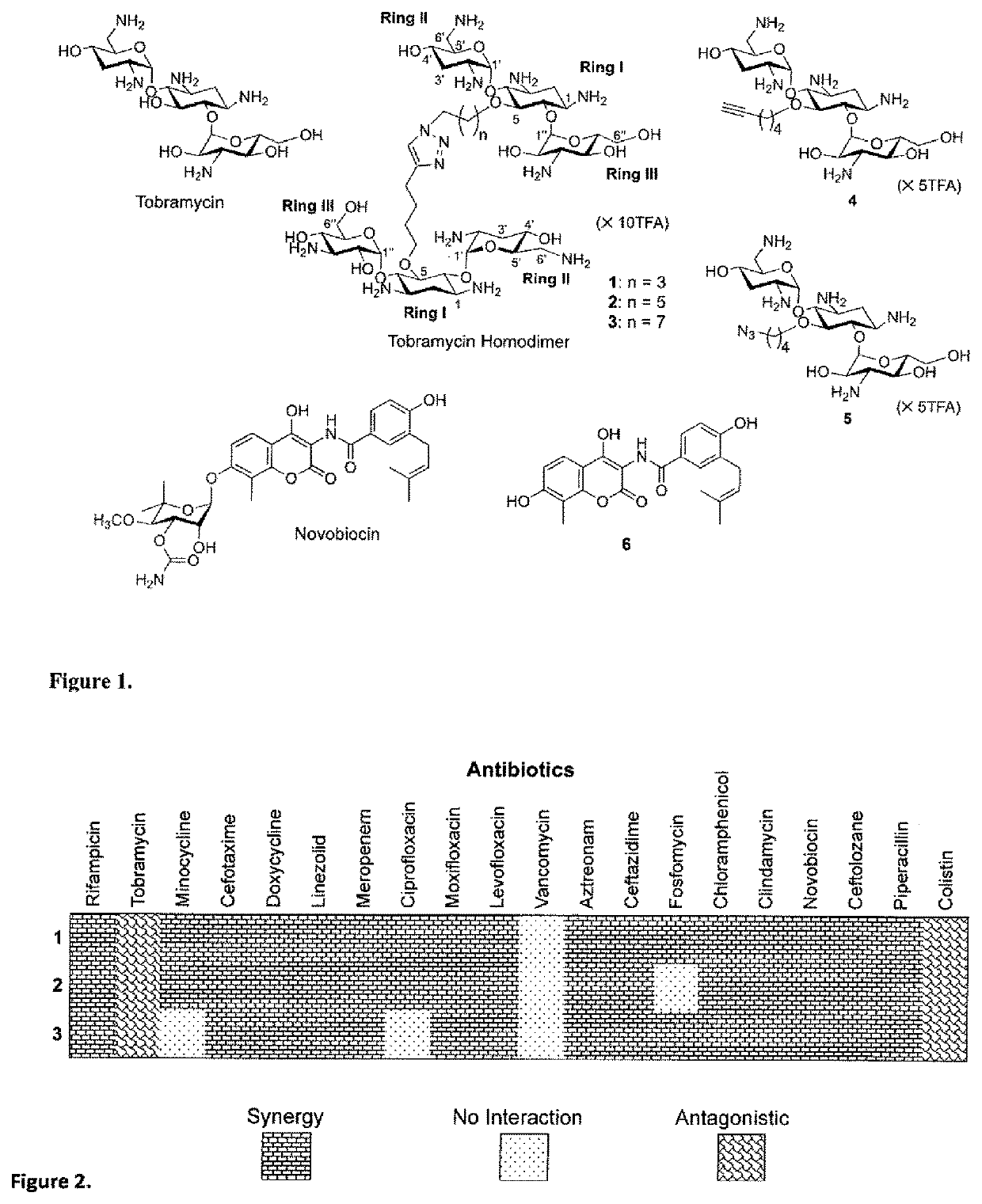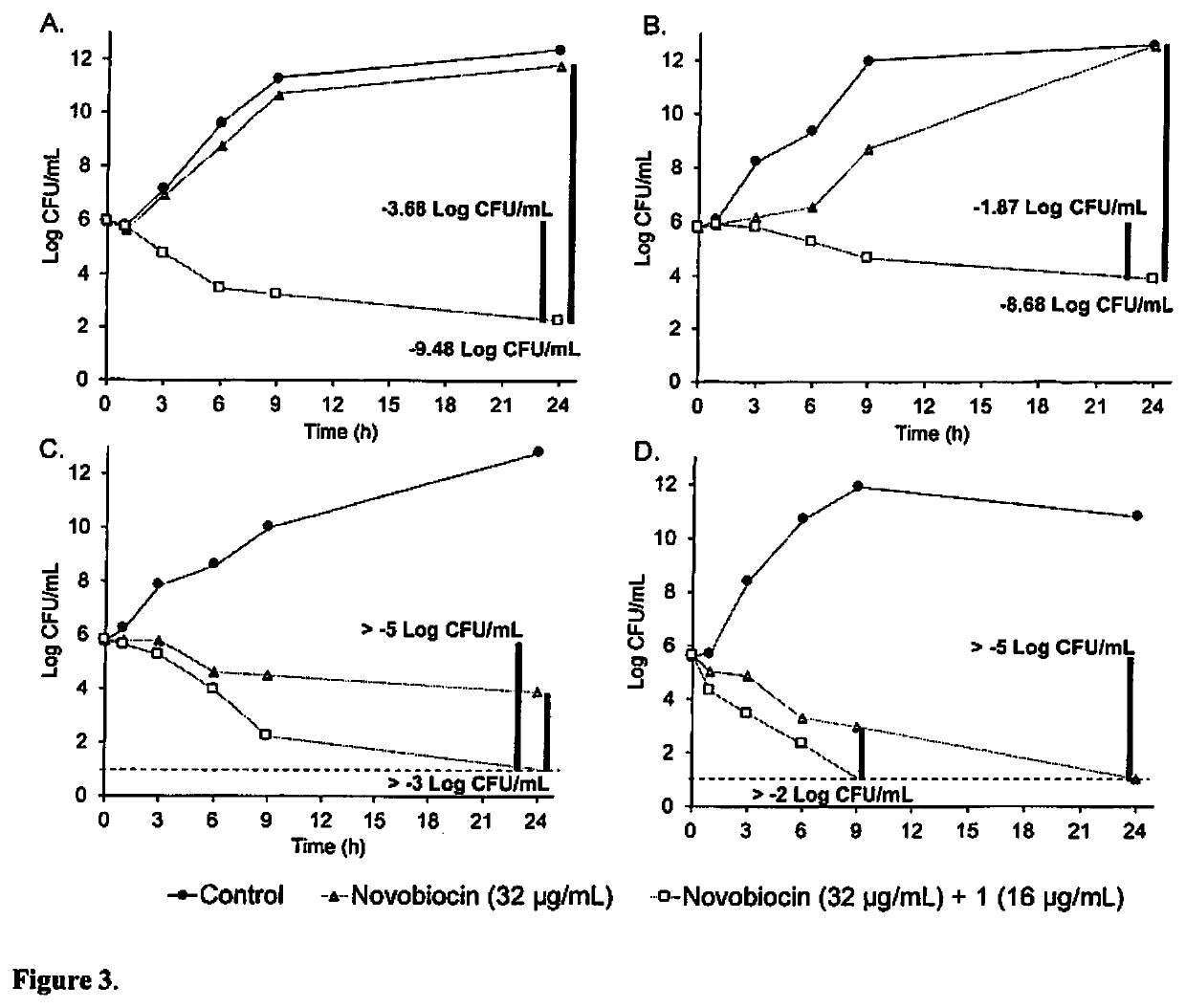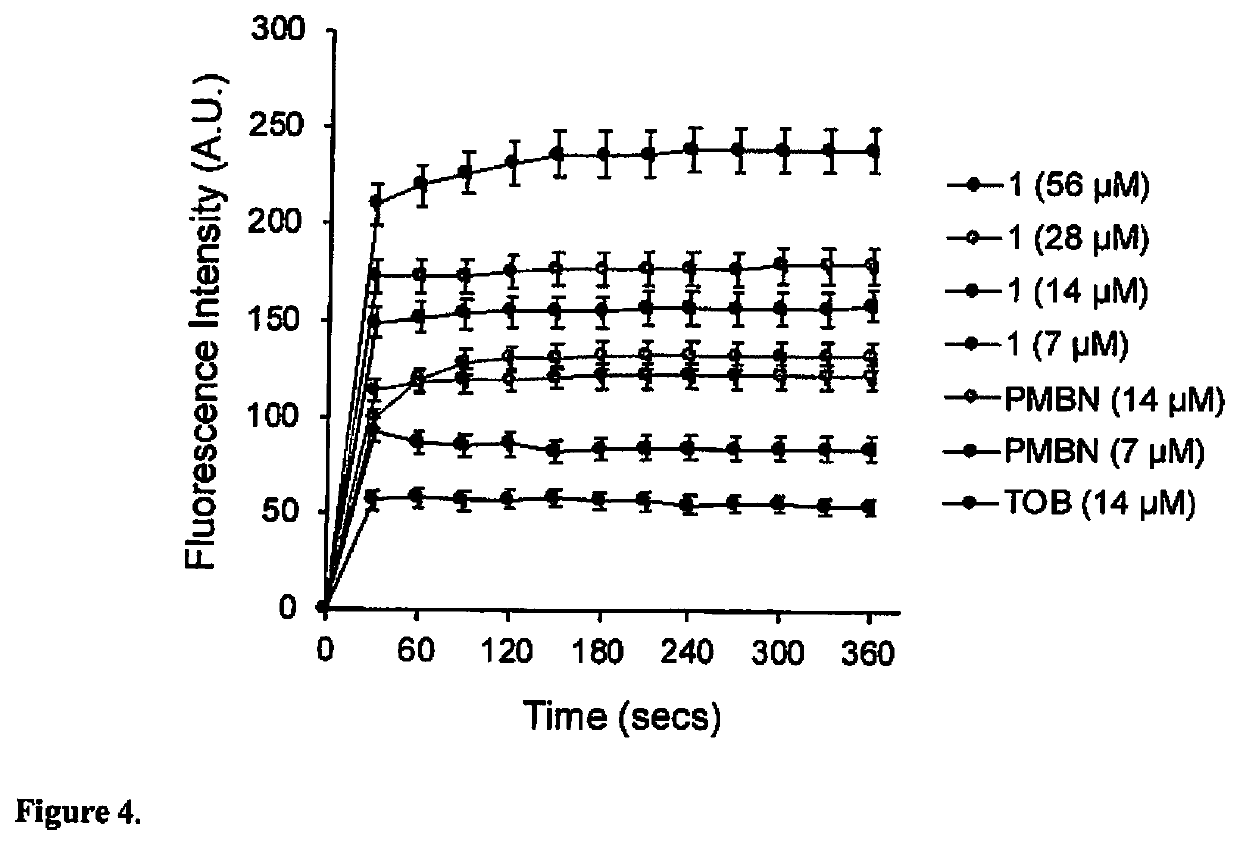Homodimeric Tobramycin Adjuvant Repurposes Novobiocin as an Effective Antibacterial Agent Against Gram-Negative Bacteria
- Summary
- Abstract
- Description
- Claims
- Application Information
AI Technical Summary
Benefits of technology
Problems solved by technology
Method used
Image
Examples
example 1
Synthesis of Tobramycin Homodimers (1-3), Fragments 4-5 and Novobiocin Aglycone (6)
[0063]The two amphiphilic tobramycin domains 4 and 5 were prepared following previously reported protocol (49). Tobramycin 7 was purchased from a commercial source and the amino groups were first protected using di-tert-butyl dicarbonate (Boc anhydride), followed by silylation of the N-Boc-tobramycin intermediate with excess TBDMSCI to afford a partially protected derivative 8 with free OH at the C-5 position of the deoxystreptamine ring. In the presence of a phase-transfer catalyst (TBAHS), 8 was alkylated with 1,n-dibromoalkane (n=4, 6, 8) in toluene to afford alkylated TBDMS-Boc-protected tobramycin intermediates 9a-c. Similarly, alkylation of 8 with iodohexyne under the same conditions followed by TBDMS deprotection afforded 11. The terminal bromine of 9a-c was then displaced by an azido nucleophile under anhydrous condition and the TBDMS protecting groups were deblocked using TBAF—to give compoun...
example 2
ility and Toxicity Screening
[0064]Susceptibilities of different Gram-positive and Gram-negative bacteria to the newly synthesized molecules 1-3 were determined and compared to the progenitor molecule tobramycin. The lack of activity of compounds 1-3 (MIC≥16 vg / ml, Table S1) against a panel of organisms, relative to tobramycin, is consistent with loss of ribosomal binding. To investigate toxicity, we tested and found that compounds 1-3 were: i) non-hemolytic against porcine erythrocytes at 1024 vg / ml, ii) non-cytotoxic to human embryonic kidney (HEK293) and human liver carcinoma (HepG2) cells at 50 μM (>128 vg / ml), and iii) non-toxic in vivo against Galleria mellonella wax moths at 200 mg / kg. On the contrary, a single dose administration of 100 mg / kg colistin was toxic to G. mellonella and killed 90% of the larvae after 96 h.
example 3
ard Assay with Different Classes of Antibiotics
[0065]The lack of antibacterial activity and non-toxic properties of 1-3 further encouraged us to screen their adjuvant properties. An ideal adjuvant is a bioactive helper molecule that is inactive by itself but can potentiate the activity of a primary antibiotic and / or delay resistance development when used in combination. These types of molecules are less likely to select for resistance (29). To investigate this, checkerboard assay was used to assess the interactions between compounds 1-3 and nineteen different antibiotics (representing all major classes) against wild-type P. aeruginosa PAO1. P. aeruginosa was selected for this initial screen because OM permeability is a major mechanism of intrinsic resistance to antibiotics (30), and it is often regarded as a highly challenging model organism for new antibiotics (31). Compounds 1-3, investigated at ≤7.1 μM based on achievable plasma concentrations (20-200 μM) of aminoglycosides (32, ...
PUM
| Property | Measurement | Unit |
|---|---|---|
| Cell angle | aaaaa | aaaaa |
Abstract
Description
Claims
Application Information
 Login to View More
Login to View More - R&D
- Intellectual Property
- Life Sciences
- Materials
- Tech Scout
- Unparalleled Data Quality
- Higher Quality Content
- 60% Fewer Hallucinations
Browse by: Latest US Patents, China's latest patents, Technical Efficacy Thesaurus, Application Domain, Technology Topic, Popular Technical Reports.
© 2025 PatSnap. All rights reserved.Legal|Privacy policy|Modern Slavery Act Transparency Statement|Sitemap|About US| Contact US: help@patsnap.com



